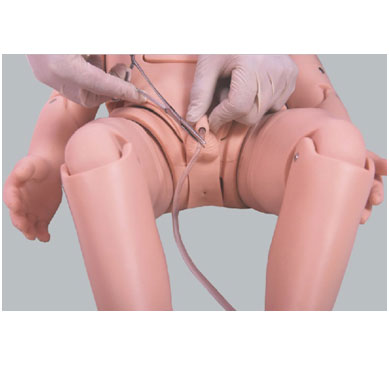06-05-2024
ADA MED SUPPLY LIMITED
Article tag: Pediatric Catheterization Model Medical catheter model
In the vast world of pediatric nursing, a professional pediatric catheterization model opens a new door of learning for medical staff with its special features, leading pediatric nursing to a new chapter.

First, let’s talk about the high degree of simulation of this pediatric catheterization model. As we all know, the physiological structure of children is significantly different from that of adults, especially the structure of the urethra and bladder. This model is carefully built based on this feature. Whether it is the slender curvature of the urethra or the volume of the bladder, all have been accurately analyzed and simulated, making the model almost the same as a real pediatric patient. This high degree of simulation not only allows medical staff to feel the real operating environment during practice, but also allows them to quickly adapt to actual operations and reduce risks caused by improper operations.
Secondly, the intelligent features of this pediatric catheterization model are also a highlight of its special features. Traditional catheterization models often can only provide basic simulation operations, but cannot provide intelligent evaluation and guidance for medical staff's operations. This model, through built-in smart chips and sensors, can record the operations of medical staff in real time and provide them with personalized feedback and suggestions through data analysis. This intelligent teaching method not only allows medical staff to understand their operating level in a timely manner, but also allows them to continuously improve and improve their skill levels in actual operations.
In addition, this pediatric catheterization model also has a variety of teaching functions. The model can simulate various complex clinical scenarios and emergencies, allowing medical staff to cope with various challenges in the simulation and exercise their ability to adapt and deal with complex situations. At the same time, the model can also carry out personalized teaching settings according to the different needs of medical staff, so that they can find the most suitable way and method for themselves in learning.
Finally, this pediatric catheterization model also offers excellent durability and safety. The model is made of high-quality materials, has a stable structure and strong durability, and can maintain good performance over a long period of use. At the same time, the model has undergone strict quality testing and certification to ensure that it will not cause any harm to medical staff and patients during use. This safe and reliable feature allows this model to be widely used in various situations, providing great convenience for the training and education of medical staff.
To sum up, this pediatric catheterization model shines a new chapter in pediatric care with its high degree of simulation, intelligent features, rich and diverse teaching functions, excellent durability, safety and other special features. It can not only provide medical staff with a comprehensive learning experience, but also help them continuously improve their skills in practice. I believe that in future pediatric care, this model will continue to exert its unique charm and contribute more to the healthy growth of pediatric patients.